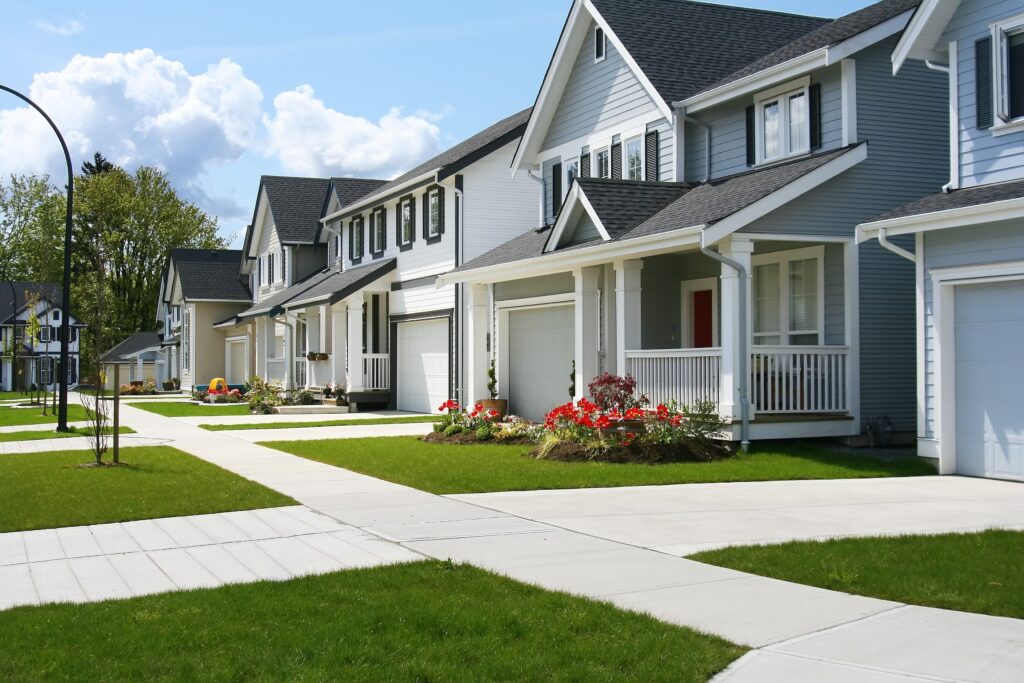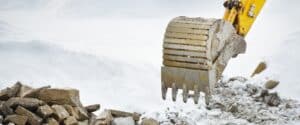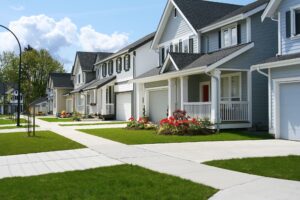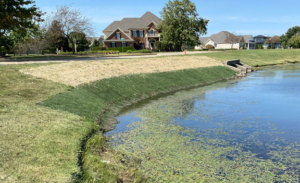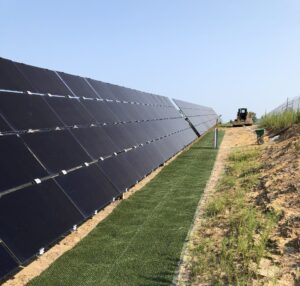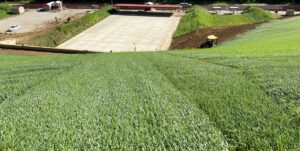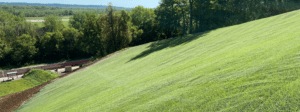An awareness of erosion potential and relevant stormwater policies can significantly benefit your property in the long term. As part of a Homeowner’s Association (HOAs) or Community association, not only are you tasked with meeting the expectations of those who use the property, you must make smart investments to keep property values high. Erosion can severely damage land and structures, and it’s expensive and inconvenient to stop or repair once the damage has been done.
Erosion is Expensive
According to a study by the European Commission’s Joint Research Centre, soil erosion is calculated to cause $8 billion in global economic losses per annum—and that only factors in the agri-food industry and markets. In reality, the true global cost is much higher when considering factors such as property prices, prevention costs, and runoff, among others. What’s more, the smaller-scale, non-agricultural losses erosion causes on residential properties tend to fall on the shoulders of homebuilders, property owners, and HOAs or community associations, not to mention the costs that are passed to the American taxpayer overall.
Violation of SWPPP guidelines can cost up to $25,000 per day, per infraction, as well as the possibility of jail time.
One of the more clear-cut costs of soil erosion is hefty Stormwater Pollution Prevention Plan (SWPPP) fines. Excess, uncontrolled, or contaminated runoff is a not unlikely result of the kind of rapid residential development construction that’s become so common nowadays. A negligent violation of SWPPP guidelines can cost up to $25,000 per day, per infraction, as well as the possibility of jail time. It’s no joke—but the strict laws show how seriously the government takes stormwater management due to how damaging erosion and runoff can be.
Erosion Lowers Property Values
In no uncertain terms, the forces of erosion affect property values in many ways. Soil loss can jeopardize the health of local plant life by destabilizing the soil and exposing plants to excess water or contaminants, possibly robbing your property of green space. Less green space means lower property values in the surrounding community. Erosion can also damage structures, particularly basements and foundations. On shorelines, erosion can destabilize land at the shore, effectively removing usable land from the property and making shorelines hazardous for pedestrians—but that’s not the only way erosion near bodies of water can impact property values.
A drop in water quality and clarity causes a more significant impact on property values than an improvement, meaning it’s generally better practice to install erosion control measures as early as possible.
According to a study by Bemidji State University, nearby water quality and clarity are closely linked to property values. Flowing water picks up pollutants and sediment as it travels, eventually depositing the material in bodies of water and visibly reducing water quality. No homeowner or resident wants to live someplace visibly polluted and dirty. It’s also important to note the study found that a drop in water quality and clarity causes a more significant impact on property values than an improvement, meaning it’s generally better practice to install erosion control measures as early as possible to maintain an acceptable water quality and high property values rather than trying to improve water quality once it’s already become a problem. A big drop in water quality could impact property values severely enough to cause a mass exodus from the community.
The Hidden Costs of Erosion Control
As mentioned earlier, erosion control is both costly and inconvenient—from installation to maintenance and repairs. Typically, large trucks are needed to bring in the erosion protection products and these trucks are loud and dirty. Their traffic means disruption to the businesses and residents in the area. Should your erosion control measure somehow fail or require repairs, even more trucks and workers will be necessary. No homeowner wants their valued community to be disturbed by loud trucks and many workers. It pays to get it right the first time so no additional trucks or workers are needed on the property.
Because trucks must generally drive to areas prone to erosion, that means the trucks will likely also pick up dirt, mud, and pollutants and spread them over your community. Angry residents have every right to report this damage and pollution, possibly resulting in SWPPP fines. Moreover, in many cases, the local HOA or Community Association doesn’t have complete control over the area’s zoning and parking regulations, so homeowners and residents are free to report disruptive construction and maintenance, complicating the process and creating an antagonistic relationship between homeowners and the community’s HOA or Community Association. In short, it pays to do it right the first time so you minimize traffic and community disturbance.
More Development Means More Erosion
Construction is a primary contributor to soil erosion because it tends to expose vulnerable soil to erosive forces. Vegetation can serve to lessen the impact of rain and wind on the soil, bind the soil, and slow water flow that would otherwise gather a significant amount of sediment. During construction, vegetation is often removed and soil is disturbed, meaning it can be easily washed away by the elements and there’s nothing to slow water flow and the forces of erosion. With so many residential properties cropping up around the country, soil is constantly being exposed to erosive forces.
The organic matter of post-construction soil was lower than the pre-construction soil by 257.4~879.8%.
According to a study in the International Journal of Environmental Research and Public Health assessing the effect of construction on land degradation, construction activities have the potential to increase soil erosion and deteriorate the soil’s physico-chemical properties which make the soil able to support life. In fact, the researchers found that the organic matter of post-construction soil was lower than the pre-construction soil by 257.4~879.8%.
It could very well come to pass that the more successful and popular your community is, the more it’s damaged by erosion due to an increase in construction—and that’s a frustrating problem. That’s why it’s valuable to preempt and understand possible erosion that might come as a result of your community branching out and building up. For example, if a resident complained about mud or silt deposits forming in her yard, it’s worthwhile to at least have an inkling that the problem might be related to, say, slope erosion on the hill near her property. It’s also useful to be informed on the basics of soil erosion and its prevention before discussing the matter with residents, engineers, or contractors.
Erosion Plays the Long Game
Erosion is a surprisingly quick process under the right conditions, but it occurs slowly enough that many put off addressing problem areas until they have a big problem on their hands—and make no mistake, those problems will appear.
In short, unchecked erosion can lead to:
- Vegetation loss, thereby further increasing erosion rates, negatively affecting the surrounding wildlife and making your community more barren and inhospitable looking
- Property loss as useable land is chipped away and made unstable
- Sediment and pollutant deposition in water systems, possibly leading to expensive Stormwater Pollution Prevention Plan (SWPPP) fines and ecosystem damage
- More damaging floods as eroded and bare land is less able to hold water
- Reduction in property value as land becomes less attractive and more hazardous
- Damage to infrastructure as erosion undercuts structures and roadways
All these negative effects of erosion only worsen over time. Vegetation loss leads to more flooding, which damages properties and picks up pollutants, clogging waterways and damaging the entire ecosystem, etc. That’s one of the more insidious aspects of erosion: it’s a process that compounds on itself. Eroded land happens to be more prone to erosion and, left unchecked, the problems that erosion causes can quickly spiral out of control. Once the process of erosion starts and the land is negatively affected, it can be nigh impossible to regain what erosion has taken from a property.
Where Does Erosion Happen?
Erosion can occur just about anywhere, but there are certain areas on residential properties where it’s more likely to be a problem. When planning an erosion control strategy on your property, make sure to prioritize these high-risk areas.
Swales and Channels
Many residential areas have manmade or natural swales or channels that serve to divert and manage stormwater and other runoff, encourage water infiltration where desired, filter pollutants, and keep your property looking its best. A manmade swale is an element of erosion control in itself, but a vulnerable, unprotected swale can erode at an accelerated rate and cause problems on and around the property. Because water flow is expected in swales or channels, the bottom and sides of the swale will experience a greater potential for erosion. That means it’s usually a good idea to install some form of preventative erosion control in the channel or swale so it can do its job for the foreseeable future and doesn’t contribute to pollutant and sediment dispersal in unwanted areas.

Slopes
A feature as simple as a slope can be a hotspot for erosion on your property. As rainfall hits a slope, it dislodges soil particles, carries them down the slope, and deposits them elsewhere. According to the Soil Science Laboratory Manual published by the University of Wyoming, surface water runoff is the main contributor to slope erosion, and the volume as well as velocity of surface water runoff is heavily influenced by the grade of the slope in question. A steeper slope doesn’t allow much time for rainwater infiltration, which results in more rapid runoff and an increased rate of erosion. Slope erosion can profoundly alter the face of your property, eating away hilly features and depositing ugly, possibly contaminated runoff at the base of the slopes or even further downstream. No homeowner wants soil removed from their property or contaminants/sediment deposited on their land.

Shorelines
Retention ponds and other small-scale shorelines are a surefire source of erosion. What started out as an attractive water feature can turn into a spreading problem, where the shoreline is gradually washed away, leaving you with contaminated water and reduced usable land. Wave action in the body of water doesn’t even have to be significant. We’re not talking about coastal applications expected to face heavy waves. For example, ripples formed by the breeze or an aeration fountain can erode small-scale shorelines surprisingly quickly. Such erosion can lead to undercut pond banks that are prone to collapse and unsafe for both maintenance workers and local residents alike.
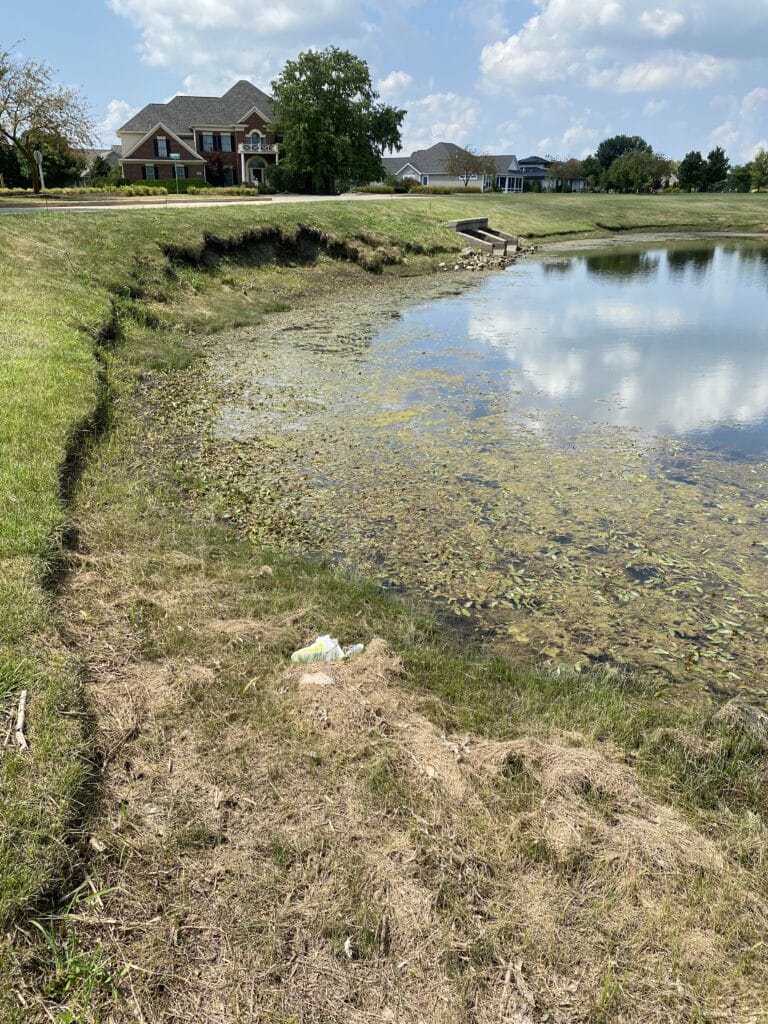
What Stops Erosion?
As mentioned above, vegetation is useful for its ability to slow the process of erosion by binding soil and slowing rainfall or water flow. Vegetation also serves to filter runoff so contaminants don’t reach the water table or vulnerable bodies of water. It serves as the gold standard for small-scale, sustainable, and attractive erosion control. To illustrate the ability of vegetation to protect soil, refer to the graph below.

As you can see, soil loss ratio—or the rate of erosion—is inversely proportional to the canopy cover percentage. It’s clear as day: vegetation simply protects soil. It looks good doing it, too. Homeowners and renters want to live in a place with green space. Unfortunately, it’s largely unfeasible for developments to leave most vegetation intact when under construction, necessitating the use of man-made erosion control measures before, during, and after construction.
Hard Armor vs Soft Armor Erosion Control
There are many erosion control products and materials on the market making up a spectrum between “soft” and “hard” armoring. Soft armor erosion control products often come as Rolled Erosion Control Products (RECPs) like Turf Reinforcement Mats (TRMs), Erosion Control Blankets (ECBs), and low-tech solutions like straw. Such soft armor solutions are aesthetically pleasing and lightweight but offer limited immediate erosion protection under high velocity water flow often found in drainage channels and along streambanks, as well as against wave action on pond banks. Until these types of soft armor materials establish mature vegetation, which may take 6 – 12 months or longer, they’re at an increased risk of failure, and may necessitate costly re-dos.
Hard armor erosion control products are generally heavy-duty materials such as concrete or rock and their use is usually justified by the area being particularly prone to erosion, an inability to grow/sustain vegetation, or the expected water flow/wave action exceeding the protection capabilities of conventional TRMs.d. Hard armor’s robustness is offset by its heavy equipment-intensive installation process and its affordability. When it comes to hard armor like rock riprap, price is dependent on specifics such as the site’s distance from the quarry and whether there’s an incentive for the quarry owner to price competitively—something they’re less likely to do if they’re the only game in town. Because one 14-ton dump truck can hold only around 300 sq ft worth of 6-inch diameter rock riprap, transportation of rock can be very expensive and disruptive to the local community. Hard armor like rock riprap is also dangerous for pedestrians to walk on, which is worth consideration on any residential development. Moreover, it’s worth noting that rock isn’t exactly aesthetically pleasing; it’s grey and utilitarian looking, so residential developers tend to use it only when more lightweight, people-friendly choices aren’t feasible.
The New Solution
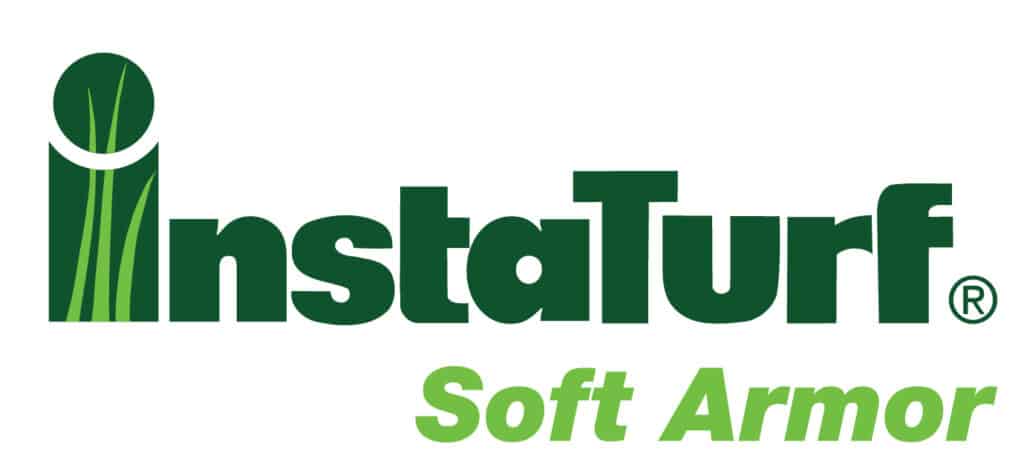
What if you could have the protection of hard armor without the need for excess truck traffic disturbing residents and damaging the roads and environs? InstaTurf’s ShearForce products bridge the gap between lightweight, vegetation-friendly soft armor products and heavy-duty, durable hard armor materials. These products use artificial turf blades to mimic the soil protection of real vegetation, while allowing natural vegetation to grow through. InstaTurf products not only provide immediate erosion protection similar to that of large rock riprap, they also stay in place long-term to reinforce the natural vegetation and substantially increase its erosion resistance. InstaTurf products are ideal for protecting drainage swales, channels, outfall areas and pond/lake shorelines where erosive forces exceed the protective capabilities of conventional TRMs, and materials like rock or concrete blocks are undesirable.
Just a few of the benefits of using InstaTurf instead of rock on residential developments:
- Lightweight and low impact: One truck can carry up to 26,000 sq ft of ShearForce10.
- Affordable: Typically half the cost of installing rock riprap.
- Aesthetically pleasing: It provides an instant green, grassed-in look.
- Safe: pedestrians and animals can walk on the product just like any grassy area.
- Easy to install: A small crew can install the product quickly, with minimal training and no heavy equipment.
- Simple maintenance: All you need is regular mowing equipment to maintain the area, with no dangerous rocks to mow around
- Works with the environment: vegetation grows through the product to increase erosion resistance and sediment/pollutant filtration, so you can meet local stormwater regulations and satisfy your residents’ desire for green space.
InstaTurf and both hard and soft armor materials have been tested in an ASTM D6460 large-scale channel testing apparatus and it’s been found that unvegetated, traditional soft armor materials indeed fail under low shear stresses, whereas InstaTurf virtually matched tied concrete block mats in terms of soil protection. If you care about the numbers, check out the results here. To put it simply, InstaTurf ShearForce products represent the immediate erosion resistance of hard armor along with the benefits of soft armor.
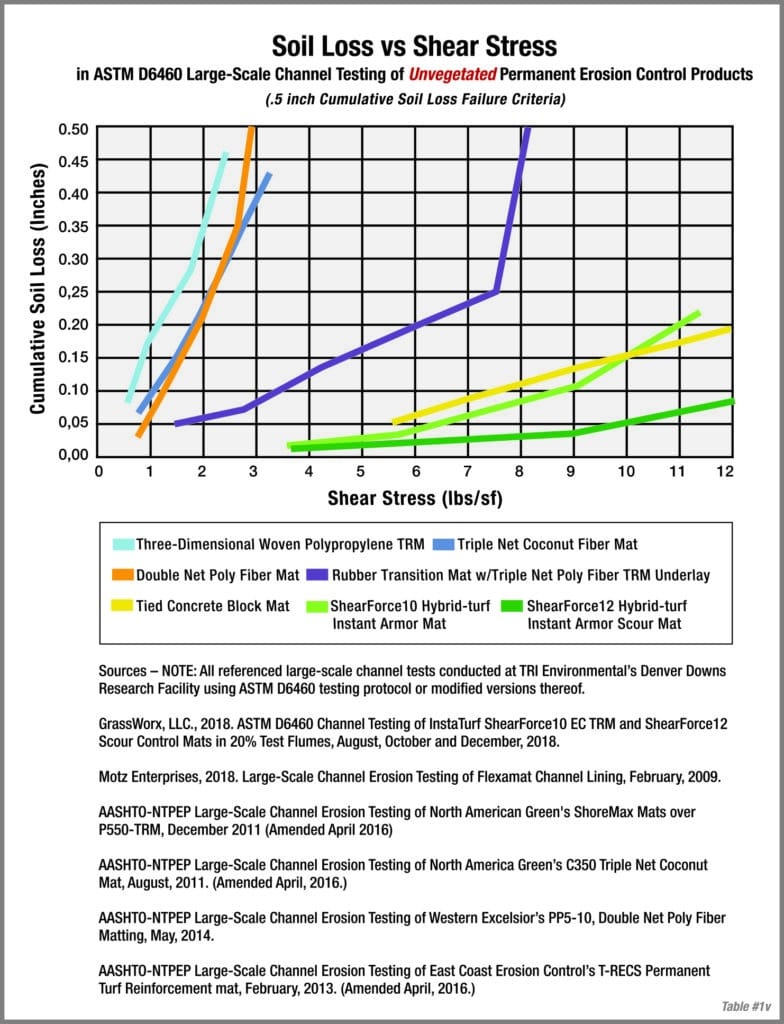
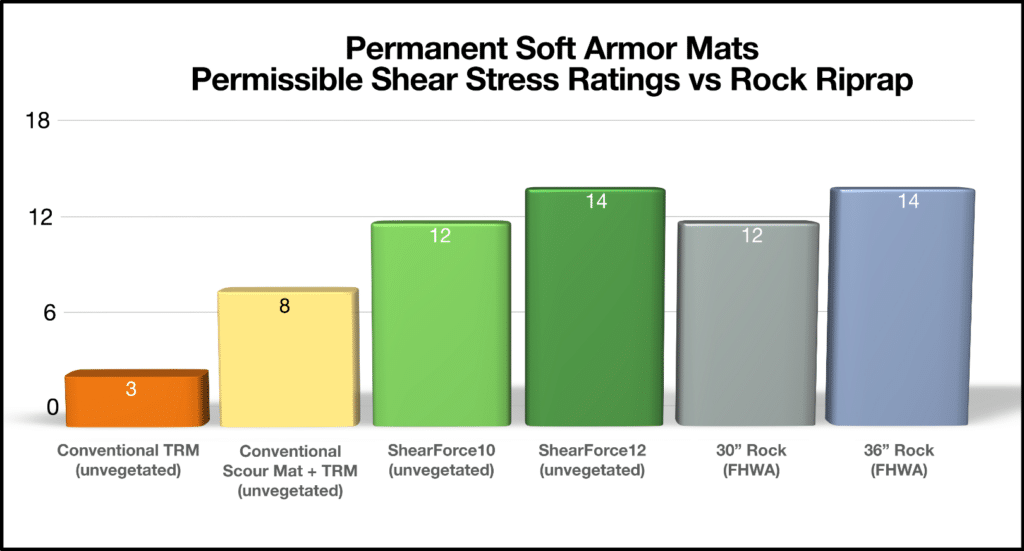
Your Situation is Unique
Most large-scale properties or communities will employ several different erosion control measures to protect the land and control runoff. Every property is unique, and it’s all about striking a balance between pedestrian safety, aesthetics, protection, ease-of-installation, and total cost. It is a daunting task to be responsible for allocating an entire community’s resources, but that’s what makes the role of an HOA or community association member so rewarding.
We hope this article has helped you conceptualize how to address a community’s erosion control needs as an HOA or community association member. With this information in mind, you can speak with engineers and contractors confidently to ensure careful preparation and a prompt response to problems as they arise, so costs are controlled, residents are happy, and property values remain high. If you have any further questions regarding erosion control in a residential community, don’t hesitate to reach out. We’ve worked with residential developments before and we’re happy to help you through your erosion control journey.

